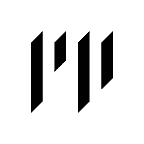A brief history of Iconography
Icons offer a form of visual shorthand that we are all familiar with. They can label, inform and aid navigation quickly and effectively in minimal space, which makes them highly useful in limited digital environments and in diagrams, maps and other forms of visual communicaiton.
For over 40,000 years humans have communicated using symbols and pictures, long before any form of written language was developed. Pictorial symbols are at the core of ancient Egyptian hieroglyphs and Chinese characters and even the modern phonetic alphabet. Today the world speaks around 7000 languages and countless dialects. The one language that transcends these boundaries is not made up of words but images.
In the 1930s the economist and social scientist Otto Neurath (1882-1945) commissioned the graphic artist Gerd Arntz (1900-1988) to develop Isotype, the International System OF TYpographic Picture Education. In addition to the acronym though an unlikely coincidence, the word Isotype is Greek for ‘the same sign’. The creation of Isotypes was born from Neurath’s belief that the world needed a unified, international visual language to support (but not replace) each of the world’s spoken languages. The Isotypes visual dictionary consisted of over 4000 symbols designed by Arntz.
“words divide, images unite” - Otto Neurath
Neurath’s principles remain relevant and continue to inform the work of today’s communication designers.
- The basic images should speak for themselves and be used repeatedly, so that they would become familiar;
- In order to achieve an undisturbed composition, the basic images should be in black and white whenever possible;
- Other images should use a limited spectrum of colours;
- The compositions should be laid out without perspective, which would distort the basic images and diminish their legibility;
- The image for ‘shoe’, for instance, would be combined with that for ‘factory’ to form the symbol for ‘shoe factory’;
- In quantitative statistics, the basic image would represent an amount, which was varied by adding more or less of the basic image. The image itself would always be at the same size;
- Numbers, other than for years, should be avoided as much as possible;
- Visual statistics should be readable like a book, which means from left to right, top to bottom;
- Images representing amounts were used diachronically and synchronically;
- When analysing development or characteristics of countries, geographical maps were used as background;
- Each chart should tell a story
( Annink & Bruinsma 2008)
Pictograms, ideograms and arbitrary symbols
Interface icons are usually either a pictogram, ideogram or arbitrary symbol, representing either tool, function or navigation. A pictogram is a pictorial symbol of a word or phrase, for example an image of fire (signifier) could be used to represent fire (signified). Ideograms symbolise the idea of a thing without the literal representation, for example an image of smoke (signifier) could also be used to represent fire (signified).
Arbitrary icons have no obvious link to the physical object they represent and must be learned rather than deducted. It is also important to realise that all these icons are not viewed in isolation but in the context of their environment (the interface). Context is essential in order for their meaning to be understood.
“Many of the signs we use to communicate are arbitrary in the sense that they are not immediately transparent to us. For this reason they have to be learnt with the conventions of the language in which they are embedded before they can be used.”
- Hall (2007)
The origins of common arbitrary interface icons
Play
The play icon first appeared on the real-to-real tape decks during the mid-1960s, sometimes with an additional triangle to represent fast-forward or rewind, with the triangles pointing in the direction the tape would wind. Play/pause symbols can now be found on any device capable of playing media and are universally used to control and represent media on-line.
Apple cmd
This symbol was designed by Susan Kare for the Apple’s early OS. In Sweden the symbol indicates a ‘noteworthy attraction’ in a campground, also known as the Gorgon loop.
USB
The USB icon was based on Neptune’s Trident, the Dreizack. The end of each point was replaced with a circle, square and triangle intended to represent the many different peripherals that could be connected using this single connection type.
Defining digital icons
The word ‘icon’ today within the context of digital communication design, represents a wide variety of image types from basic monochrome favicons, to full colour photorealistic applications icons. The following defines some of the most common digital icon types.
Favicons
Found in browser address bars and app home screens, almost always a smaller version of the website logo.
Application
These icons can be photorealistic and represent digital applications.
Feature icon
Icons that are used within information design or to illustrate.
Interface
The user interface icon, or UI icon can symbolise a command, file, content type or devices. These icons aid navigation and highlight actions and functions.
Thanks for reading, please take a look at my related articles.
